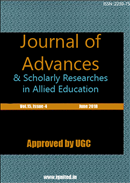Meteorological Droughts Forecasting Using Fuzzy Logic
An in-depth analysis of meteorological drought forecasting using fuzzy logic
Keywords:
Meteorological Droughts Forecasting, Fuzzy Logic, Droughts characteristics, Drought assessment, Drought severity maps, Drought spatial distribution, Meteorological methodology, Drought risk assessment, Water resources management, Modeling techniquesAbstract
Droughts are devastating extreme weather events which can damage the environment and human lives significantly. Preparations for drought can be developed to manage the effects of drought. The success of this amongst other things depends on the well-defined and quantified Droughts characteristics. A preliminary forecast of drought conditions is the essential requirement for reducing the harmful effects of droughts. The main aim of this study is therefore to develop a methodology for the evaluation and forecasting of drought. The drought assessment was performed on the basis of the methods of the Indian Meteorological Department (IMD) and the SPI. To generate drought severity maps, Droughts severe values were used. Drought spatial distribution was found with the nearest GIS neighborhood analysis. The block boundaries and drought-risk maps of the spatial drought proneness of the blocks are overlaid. For the Droughts evaluation a meteorological methodology for meteorological drought risk assessment was developed. This provides a unique way of long term understanding of every area's overall drought situation. Droughts are long periods of rainfall, resulting in insufficient availability of water and adverse effects on crops, animals and human beings. Drought forecasts are essential to the planning and management of water resources to minimize the adverse effects. Many models for this purpose were developed and indeed, the selection of the best model for your research would be a long process for researchers. A timely, comprehensive and informative overview of the concepts and history of the models would prevent researchers from overlooking the potential choice of models and from saving them considerable time. Models are classified by mechanism regression analysis, stochastic analyses, probabilistic analysis, artificial intelligence based, hybrids and dynamic modelling. The details of the selected documents are tabulated for ease of reference and include modelling approaches, authors, publishing year, methods, input variables, assessment criteria, time scale and drought type. In addition to historical applications, advantages and limitations, the basic concepts for each approach with key parameters are explained. Finally, for the continuing research into drought, future prospects and possible modeling techniques are developed.Published
2018-06-02
How to Cite
[1]
“Meteorological Droughts Forecasting Using Fuzzy Logic: An in-depth analysis of meteorological drought forecasting using fuzzy logic”, JASRAE, vol. 15, no. 4, pp. 722–727, Jun. 2018, Accessed: Dec. 20, 2025. [Online]. Available: https://ignited.in/index.php/jasrae/article/view/8300
Issue
Section
Articles
How to Cite
[1]
“Meteorological Droughts Forecasting Using Fuzzy Logic: An in-depth analysis of meteorological drought forecasting using fuzzy logic”, JASRAE, vol. 15, no. 4, pp. 722–727, Jun. 2018, Accessed: Dec. 20, 2025. [Online]. Available: https://ignited.in/index.php/jasrae/article/view/8300











